lens
Transforming Tradition
Two new residential buildings create community hub with hammocks, grills and airy lounges for study and socializing
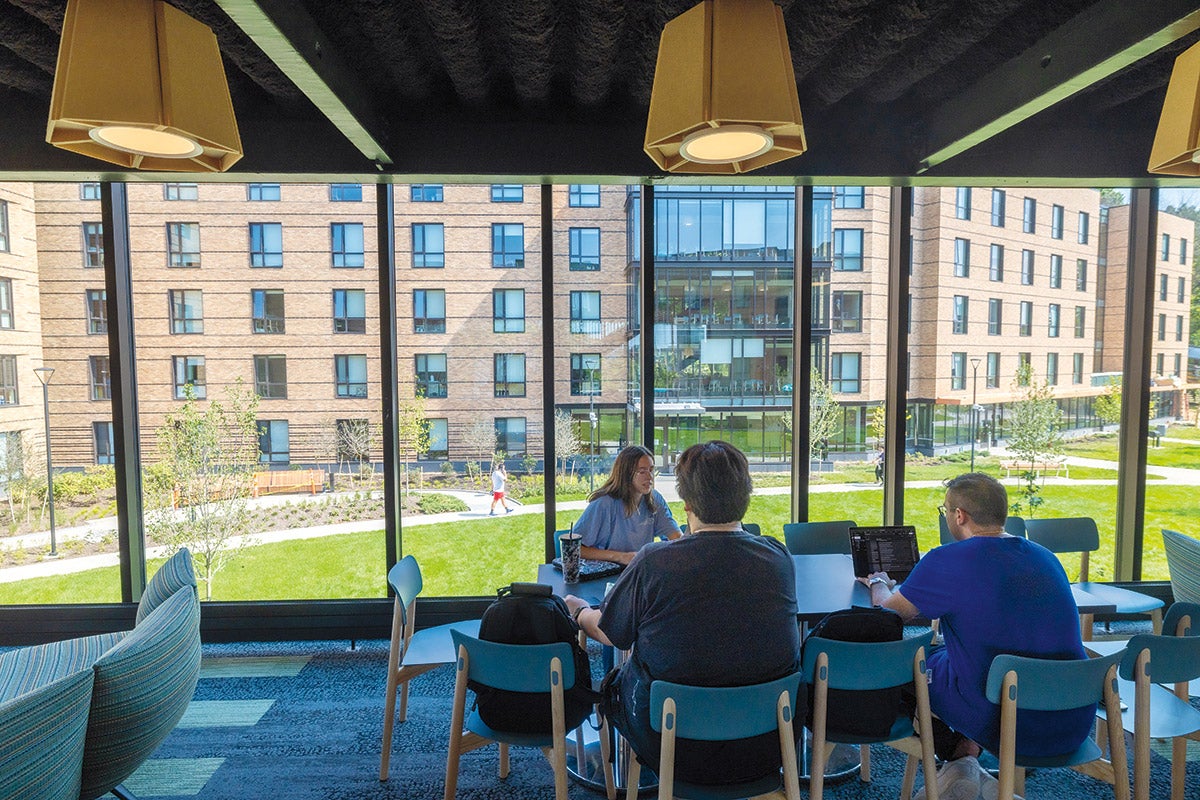 Photo by Matt ShifflerSecond-year students moved into two new buildings in the South Residential Village in August and quickly made them home. See more photos of the new halls below.
Photo by Matt ShifflerSecond-year students moved into two new buildings in the South Residential Village in August and quickly made them home. See more photos of the new halls below.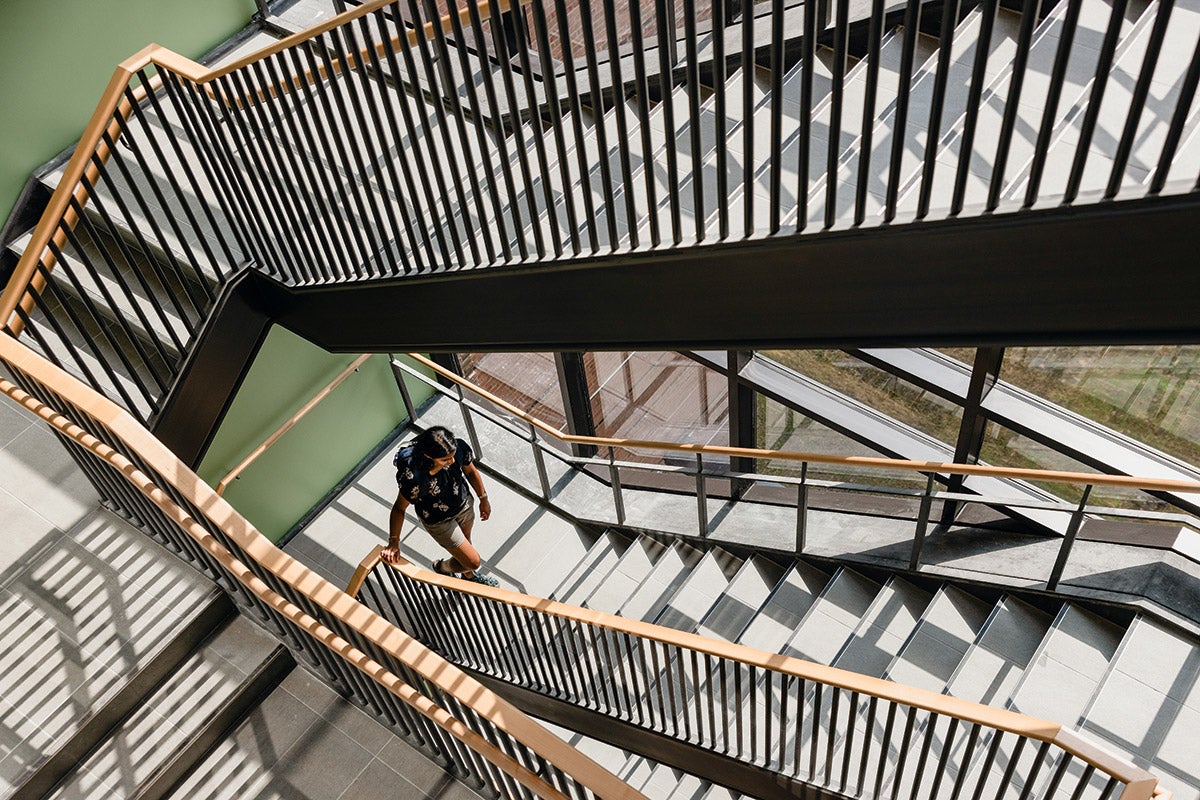
Photo by Annie O Neill
Imagine living in a newly built residence hall with modern features that students wanted—and art installations they helped create.
That's exactly what nearly 600 second-year Case Western Reserve University students are experiencing this academic year in two new buildings in the South Residential Village the university debuted in August.
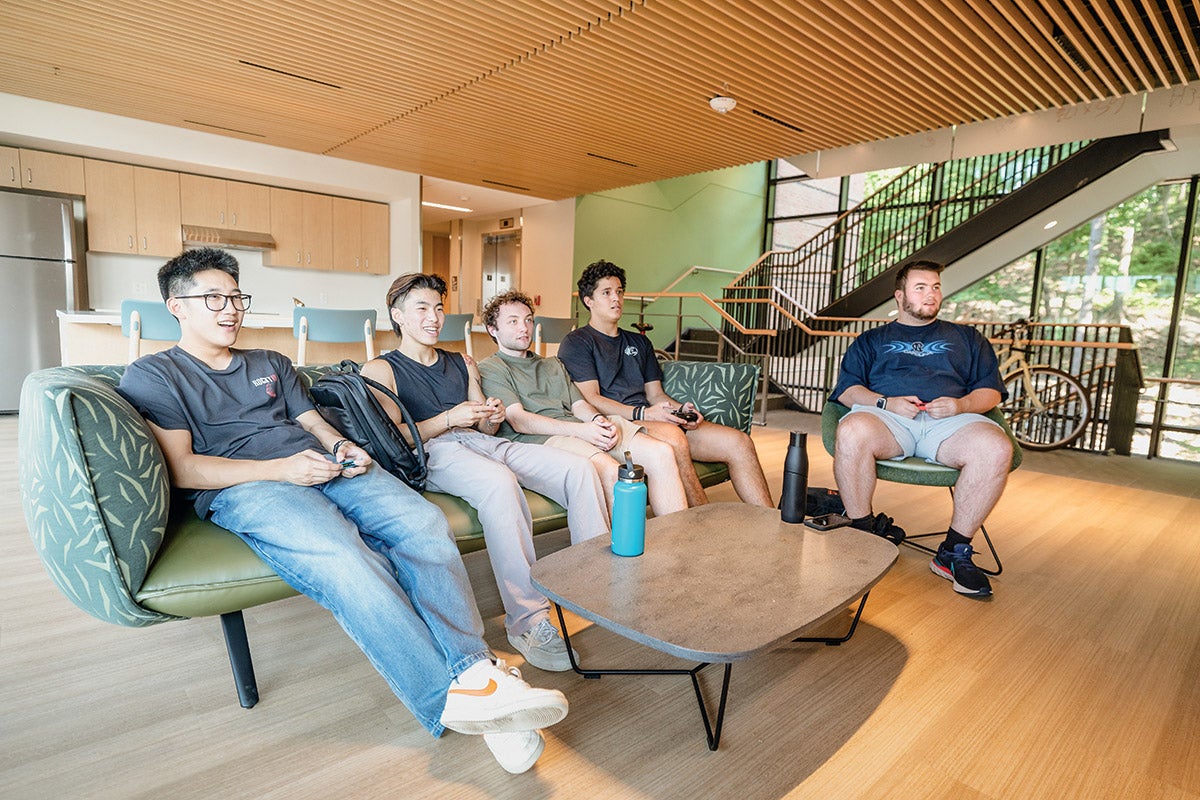
Photo by Matt Shiffler
"I am obsessed with the design—I love how everything is modern and clean," said Paxton Sandoval, who's studying biochemistry. "The seating (couches and chairs) has appealing designs and the colors are so fresh. I am also a sucker for big windows and natural light, which this dorm building prioritizes."
Sandoval is living in what's known as the Mary Chilton Noyes House, which stands alongside the John Sykes Fayette House. Both are named for trailblazing alumni and were designed to redefine the very essence of student housing.
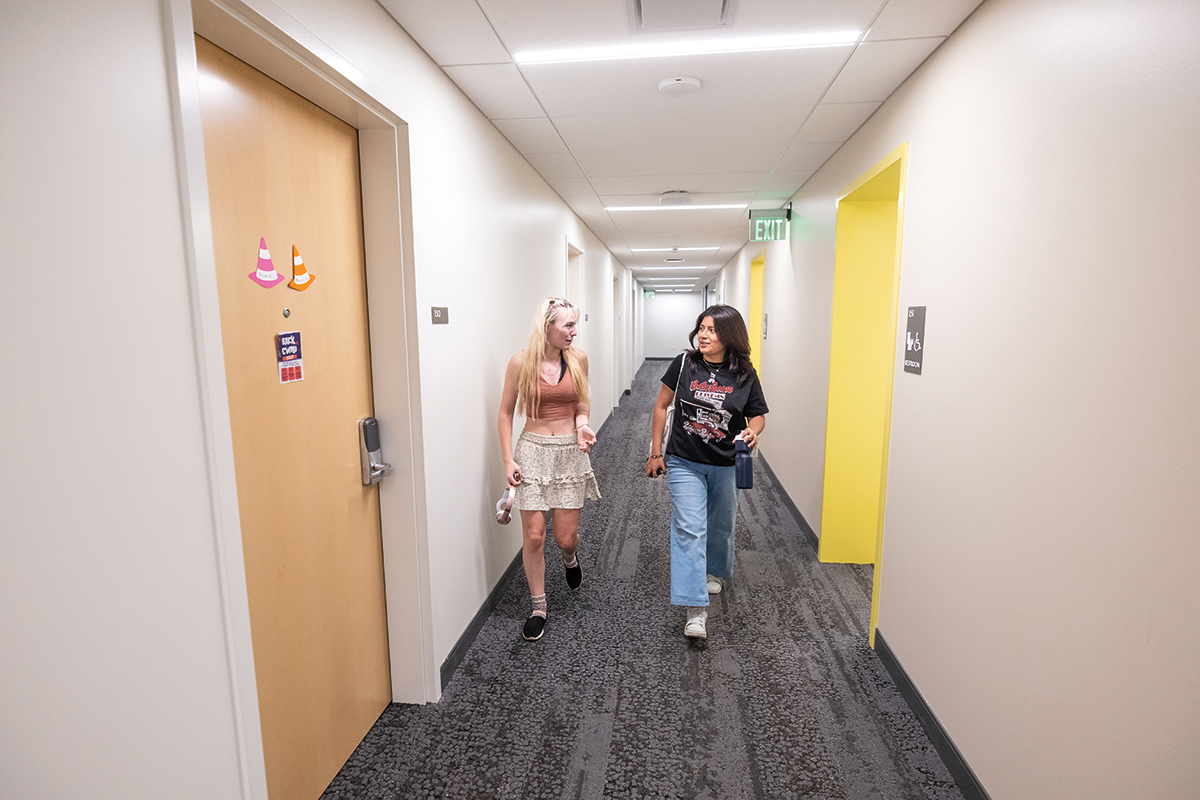
Photo by Matt Shiffler
Air-conditioned rooms and private bathrooms are just the beginning. The new living spaces—which share a large recreation lawn and wellness garden—also feature on-floor laundry machines, extensive shared spaces and one on-site health clinic. And, by year's end, they will feature large-scale customized printed graphics turned into wallpaper that will breathe added personality into the buildings while celebrating connections to campus life and history.
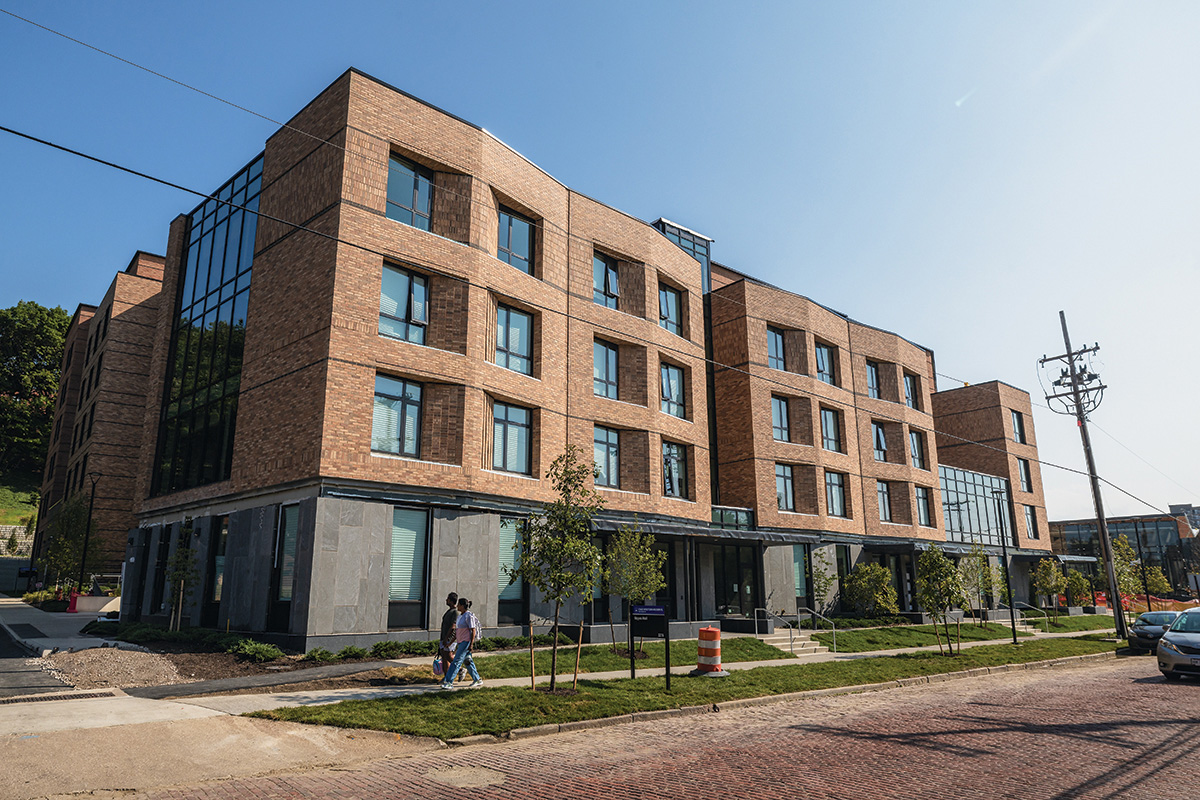
Photo by Matt Shiffler
Students helped create the art, working with CWRU's Putnam Art Committee. Some joined artist Christine Mauersberger during April's total solar eclipse to create cyanotype prints of campus plants; others offered small objects from everyday life for a time-capsule mural created by artist Amber Kempthorn, an assistant professor at Cleveland Institute of Art.
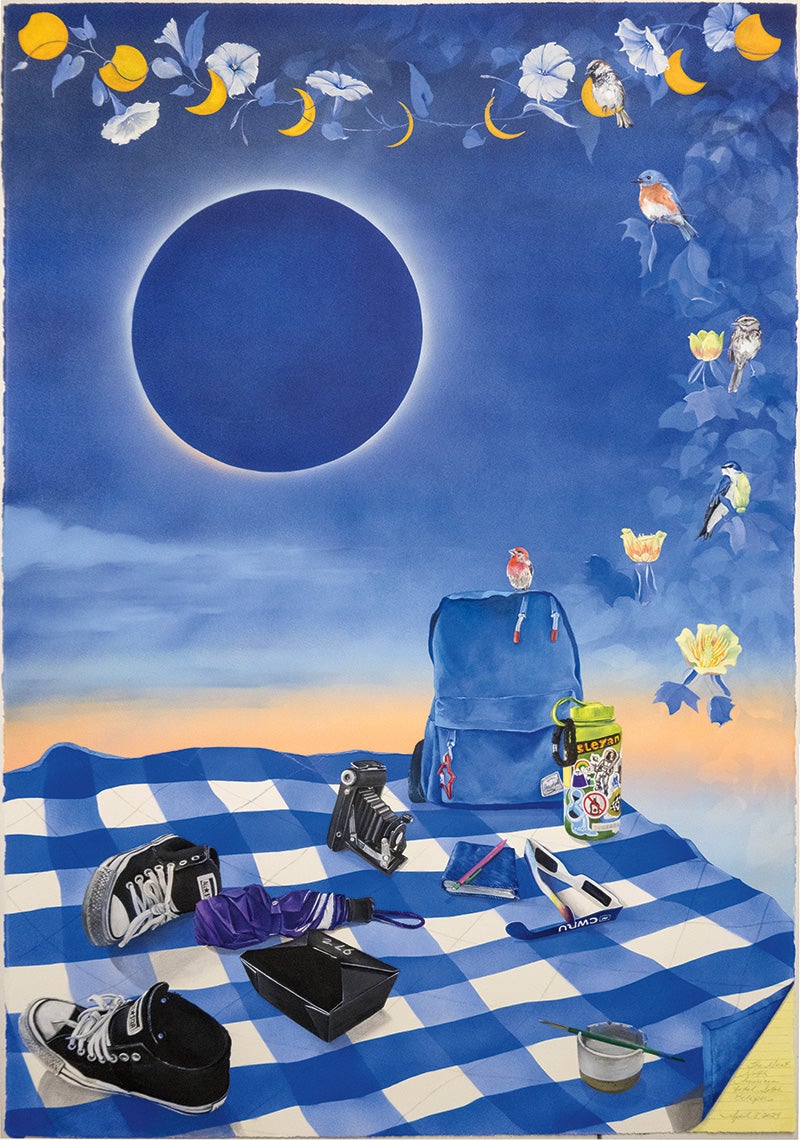
Photo by SILVER FROG STUDIOOriginal artwork will be installed in the residence buildings before the end of the year. One is a time-capsule-like mural created by artist Amber Kempthorn and partly shown here that features everyday items suggested by students.
The two houses, along with the existing South Residential Village residence halls, bring together second-year students in one area and provide new beds to accommodate CWRU's growing enrollment.
The buildings were designed by William Rawn Associates and pay tribute to inspiring achievements: John Sykes Fayette was the first known African American graduate of Western Reserve College, earning a bachelor's degree in 1836 and a graduate degree in 1837; Mary Chilton Noyes was the first woman to earn a PhD from Western Reserve University, receiving the degree in physics in 1895.
"By providing modern amenities, we create a comfortable and supportive living environment that encourages students to engage with their peers and the broader campus community," said Vern Rogers, executive director of University Housing. "These improvements not only enhance day-to-day living, but foster a sense of belonging and community, which I believe are crucial for academic and personal growth."
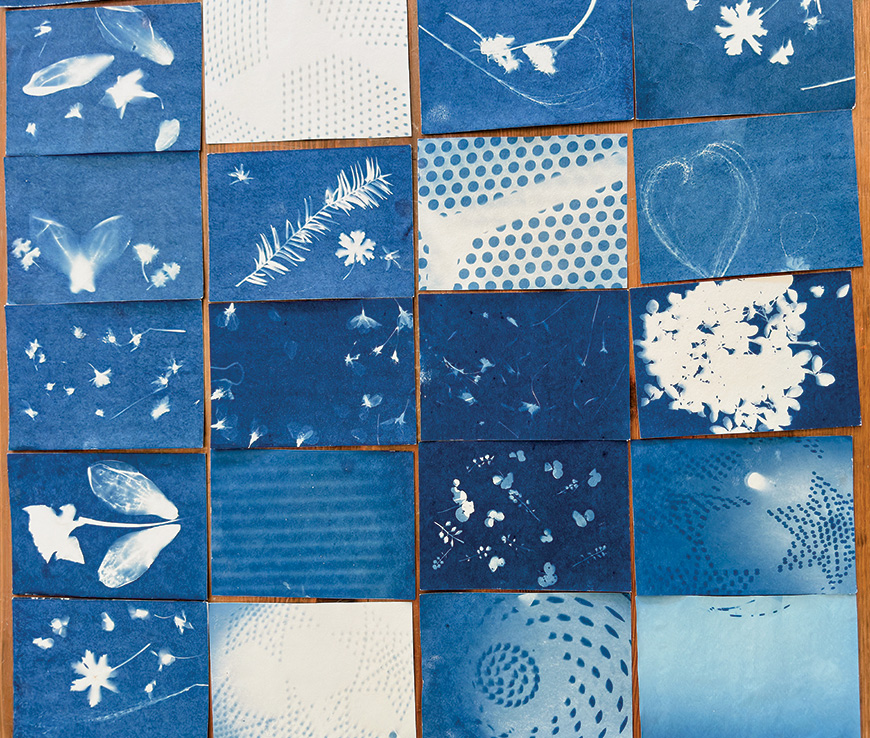 Original artwork will be installed in the residence buildings before the end of the year. One involves a series of cyanotype prints partly shown here that will be turned into wallpaper. Artist Christine Mauersberger created them with students during the total solar eclipse in April.
Original artwork will be installed in the residence buildings before the end of the year. One involves a series of cyanotype prints partly shown here that will be turned into wallpaper. Artist Christine Mauersberger created them with students during the total solar eclipse in April. — ALAINA BARTEL





